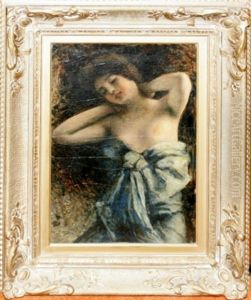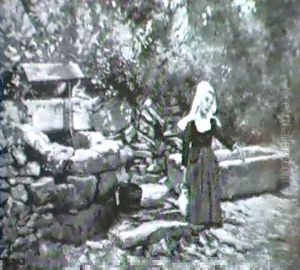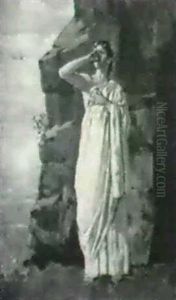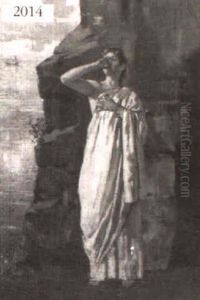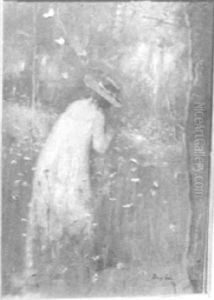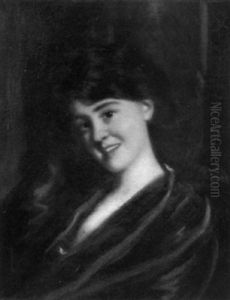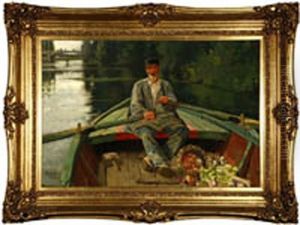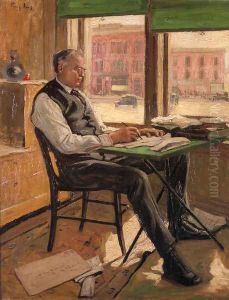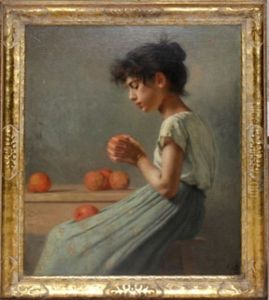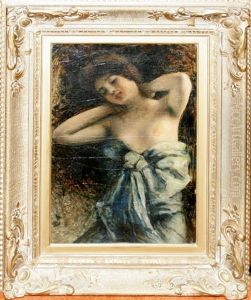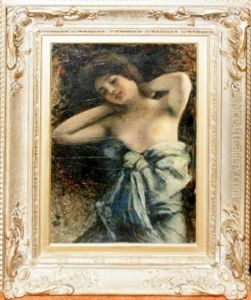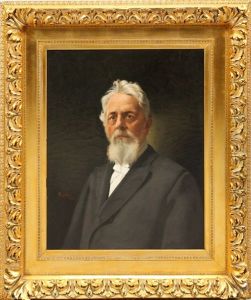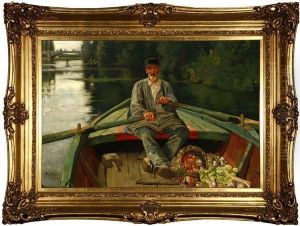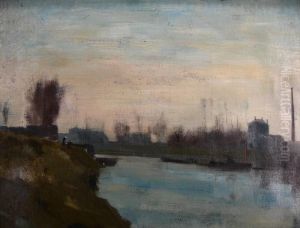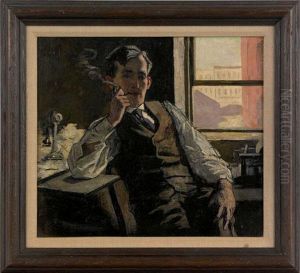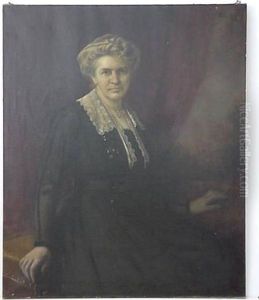Percy Ives Paintings
Percy Ives was an American painter and educator born on June 16, 1864, in Detroit, Michigan. He was part of the American art scene during the late 19th and early 20th centuries. Ives came from a family with artistic interests; his father, Enoch Ives, was an engraver and his uncle, William Ives, was a prominent figure in the Detroit art community, which likely influenced Percy's early exposure to the arts.
Percy Ives showed an aptitude for art from a young age and pursued his passion for painting with zeal. He studied in Detroit under his uncle before moving to Paris to further his education. In Paris, Ives enrolled at the École des Beaux-Arts, which at the time was one of the most prestigious art schools in the world. Here, he trained under renowned French painters such as Jean-Léon Gérôme and had the opportunity to immerse himself in the rich European art scene. His style was influenced by the academic tradition, which emphasized classical techniques, as well as by the Impressionist movement, which was burgeoning during his time in France.
After several years in Europe, Ives returned to Detroit where he became an influential figure in the local art community. He was one of the founding members of the Detroit Society of Artists and served as its president for a time. Ives also became an educator and played a significant role in the establishment of the Detroit School of Fine Arts, where he served as both an instructor and director. Through his teaching, he had a profound impact on the development of young artists in the region and helped shape the Detroit art scene for future generations.
Percy Ives' own work consisted primarily of portraits, landscapes, and genre scenes. His paintings were known for their realistic portrayal of subjects with a nuanced use of light and color, characteristics that reflected the influence of his academic training and his exposure to Impressionist techniques. Despite not being widely known today, in his time, Ives was respected for his craftsmanship and his dedication to arts education.
Ives continued to be active in the Detroit art community until his death on March 16, 1928. His legacy lives on through his contributions to arts education in Michigan and the works he left behind, which are held in various collections and occasionally appear in exhibitions focusing on American art from the period.
